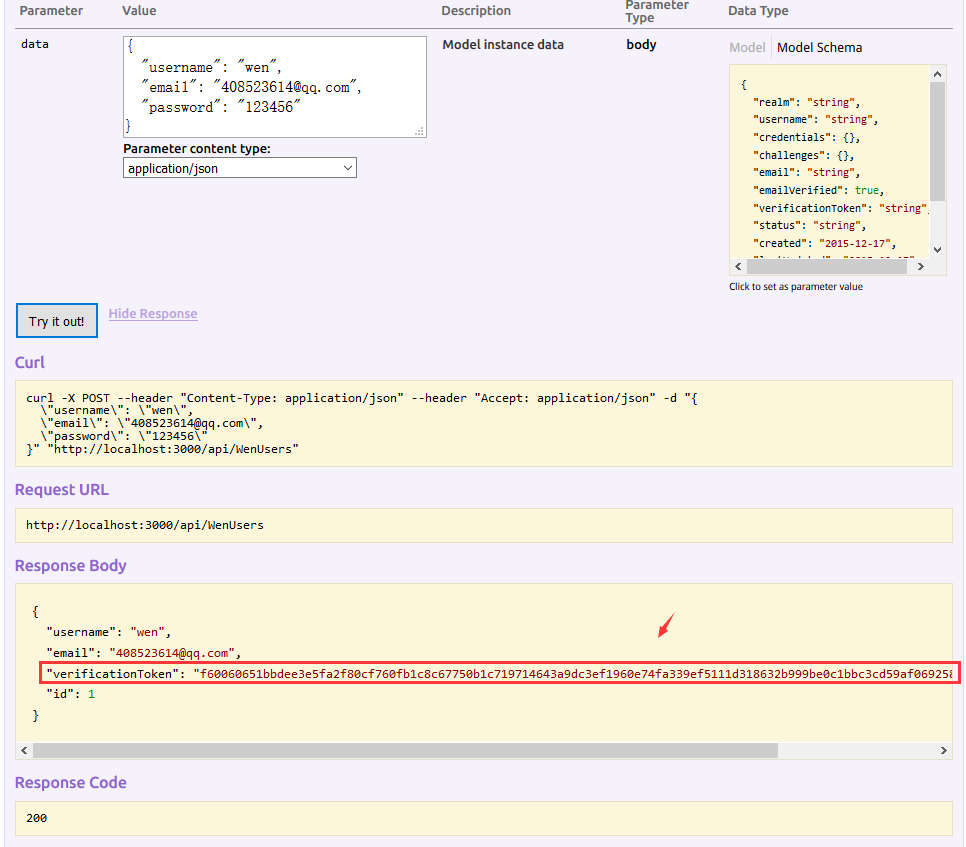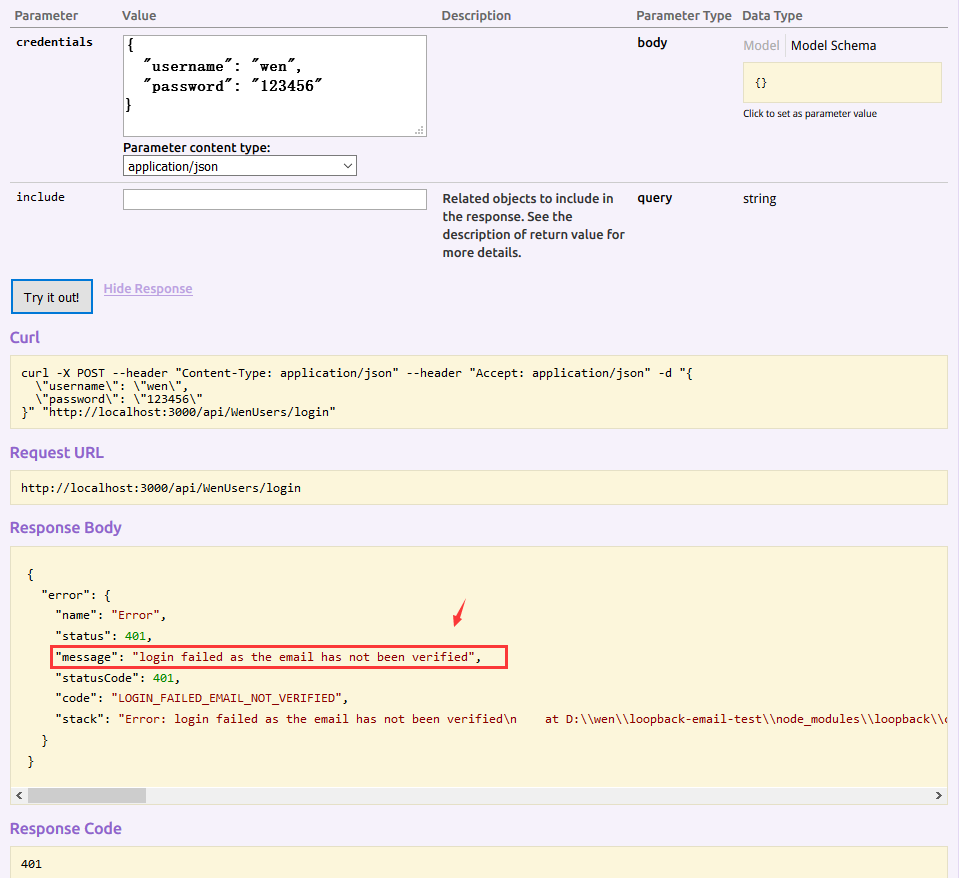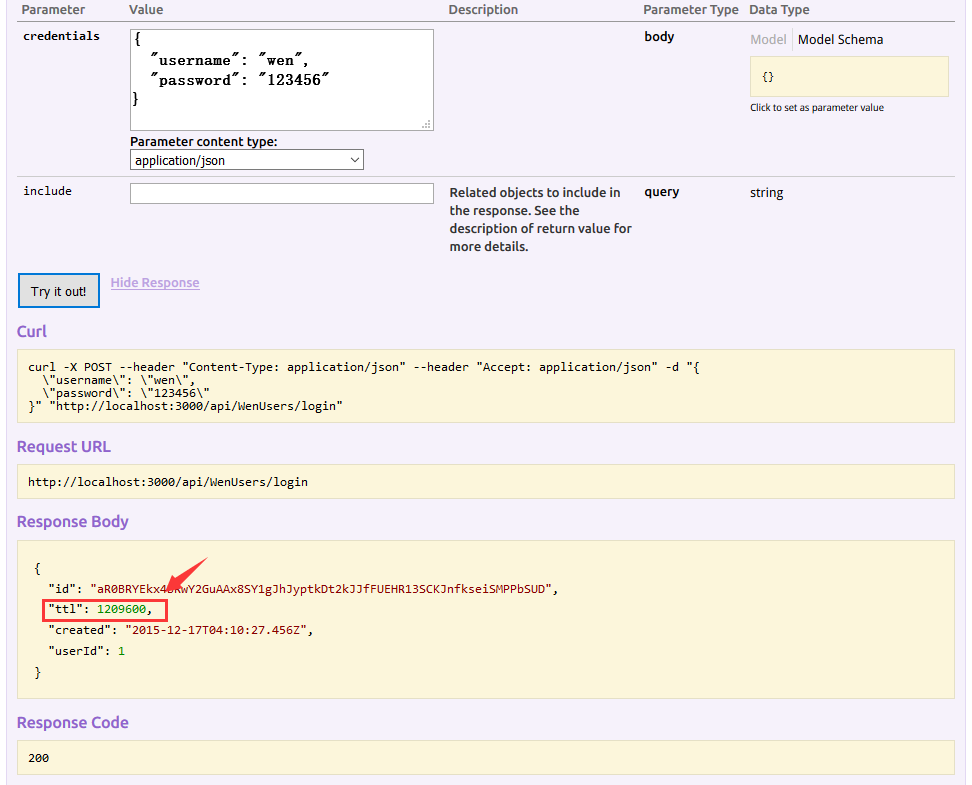loopback注册后发送邮箱验证
开始
安装loopback源码(要是不知道slc命令的可以先看我的Node.js框架lookback学习一 )
$ slc loopback
创建一个基于User的模型WenUsers(这个名字是随便取的)
$ slc loopback:model
1
2
3
4
5
6
7
8
9
? Enter the model name: WenUsers
? Enter the model name: WenUsers
? Select the data-source to attach WenUsers to: db (memory)
? Select model's base class User
? Expose WenUsers via the REST API? Yes
? Common model or server only? common
Let's add some WenUsers properties now.
Enter an empty property name when done.
? Property name:
此时源码会多出目录./common/models/,在这个目录下会多出两个文件wen-users.js和wen-users.json
编辑wen-users.js 文件
1
2
3
4
5
6
7
8
9
10
11
12
13
14
15
16
17
18
19
20
21
22
23
24
25
26
27
28
29
module.exports = function(WenUsers) {
WenUsers.sayHi = function(callback) {//定义一个http接口方法
callback(null, 'hi');
};
WenUsers.remoteMethod(//把方法暴露给http接口
'sayHi',
{
'accepts': [],
'returns':[
{'arg': 'result','type': 'string'}
],
'http':{
'verb': 'get',
'path': '/say-hi'
}
}
);
WenUsers.afterRemote('create',function(context, user, next) {//注册后的回调
console.log("> user.afterRemote triggered");
var option={//配置邮件发送参数
type: 'email',
to: user.email, //邮件接收方,即注册时填入的有限地址
from: '408523614@qq.com',//邮件发送方
subject: 'Thanks for registering.',//发送的邮件标题
redirect: '/'//点击发送到邮件的链接激活账号后的回调http地址
};
user.verify(option, next);
})
};
以上代码,我们暴露了一个http接口方法sayHi,用于测试,此时你运行项目slc run,打开链接http://localhost:3000/explorer 就会看到页面多出了一个WenUsers接口,在接口下边多出了一个WenUsers/say-hi方法接口(说明刚创建的模型WenUsers接口是没问题的)
编辑wen-users.json 文件
1
2
3
4
5
6
7
8
9
10
11
12
13
14
15
16
17
18
19
20
{
"name": "WenUsers",
"base": "User",
"idInjection": true,
"options": {
"validateUpsert": true
},
"properties": {},
"validations": [],
"relations": {},
"acls": [
{
"principalType": "ROLE",
"principalId": "$everyone",
"accessType": "READ",
"permission": "ALLOW"
}
],
"methods": {}
}
acls这个配置是权限配置,让所有用户都可以访问自己定义的接口。
配置.server/model-config.json这个文件,即配置邮件数据源的指定,在文件的最后加入,代码如下:
1
2
3
4
5
6
7
8
9
10
"WenUsers": {
"dataSource": "db",
"public": true,
"options": {
"emailVerificationRequired": true
}
},
"Email":{
"dataSource": "email"
}
配置./server/datasources.json这个文件,即配置邮件数据源,在文件的最后加入,代码如下:
1
2
3
4
5
6
7
8
9
10
11
12
13
14
15
16
17
18
19
"email":{
"name":"email",
"connector": "mail",
"transports": [
{
"type": "smtp",
"host": "smtp.qq.com",
"secure": true,
"port": 465,
"tls": {
"rejectUnauthorized": false
},
"auth":{
"user": "408523614@qq.com",
"pass": "这里输入你的邮箱密码"
}
}
]
}
这里我填入的是我的qq邮箱,这个邮箱是用于发送配置的,即用这个邮箱给你待会注册的用户填入的邮箱,发送信息。
改一下./server/config.json这个文件中的host,发送邮件的时候会用到,本地测试一般都是127.0.0.1或localhost,修改如下图所示:
1
2
3
{
"host": "localhost"
}
运行项目,测试注册一个用户,看是否会发送邮件,要是成功的话会看到如图所示:
以上代码会多出了 "verificationToken"这个字段,这个字段的生成是用来验证登陆的。
此时登陆,是不成功的,如图:
打开你邮件收到的链接,即激活了用户,然后再登陆测试,此时即可成功登陆,会返回一个ttl,如图所示:
以上源码可以在我的github上下载loopback-email-test


